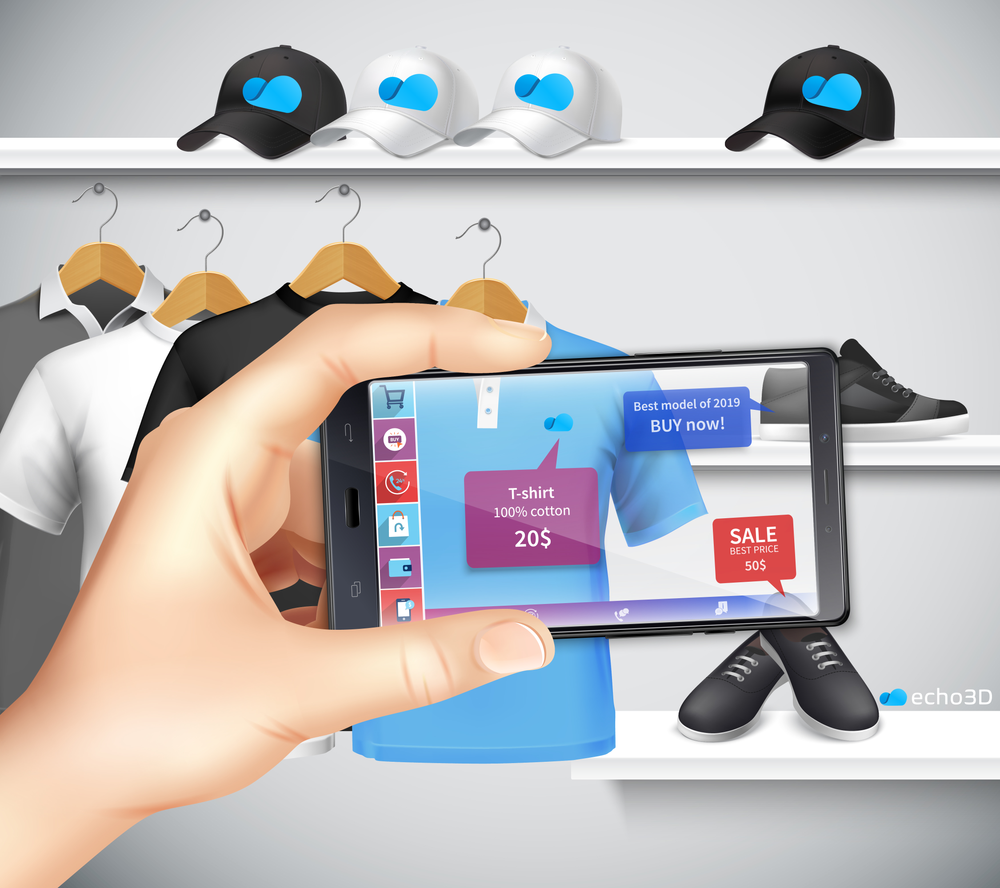
How Augmented Reality is Changing the eCommerce Industry
With the augmented reality (AR) industry expected to have a compound annual growth rate of 45% between 2021 and 2028, it’s no wonder you’re seeing more of it in eCommerce. Brands are trying harder than ever to be tightly connected to their customers in every way. AR is a clever solution for digital retail because the main challenge of online shopping is that shoppers cannot enjoy an accurate sensory shopping experience, from touching the item to trying on the fit. It’s hard to determine what the product will be like in person.
Digital retailers have to rely on different technologies to help bridge the gap between expectations and reality and improve the customer experience while finding ways to cut costs without compromising on value. We at echo3D are excited to support digital retailers as the backend for AR. echo3D also offers a Shopify plugin to make it as simple as possible for any size digital retailer to offer AR add-ons to compete with larger retailers.
Scan or click this link https://go.echo3d.co/UupJ to see something cool!
Scan or click this link to see something cool!
Here are some ways that digital retailers are using AR and how it’s benefiting them.
Virtual try-on
While shopping online, shoppers want the best sense of what they are buying, right down to the fit and material. They take precautionary measures to ensure they buy the right product but can only be so confident with a few photos on another model’s body. Popular makeup brand Sephora offers a virtual try-on feature with makeup on their platform which is a dream come true for many online shoppers. echo3D offers a tutorial so anyone can integrate similar technology into their cosmetics eCommerce store. Whether it’s makeup, accessories or a pair of shoes, AR is giving shoppers a more accurate preview of what they can expect.
Interactive user manuals
If you’ve ever tried to assemble furniture or install your internet at home, you know how easy it is to get lost following instructions. An interactive user manual overlays text and images with AR technology to provide instructions interactively. These visual assets are superimposed on the user’s real-world view which gives them a robust mixed reality experience to better understand instructions visually. This value-add amplifies the ease and satisfaction of the customer journey by using the power of AR that creates an effective user engagement tool. This benefits companies by lowering the need for contacting support and reduces returns due to lack of customer knowledge and satisfaction.
Source: VRScout
Increase customer engagement
Since AR can now be interactive, markerless and does not necessarily require users to download an app, engagement is thriving with this technology. The longer users stay engaged with the app, the higher the chance they have to make a purchase. Depending on the content, the same experiences can also be shareable thus boosting their placement within their respected social media algorithm and increasing visibility to similar audiences. Brands spend millions a year just to maintain a positive brand image and stay top of mind. Interactive AR is an effective way to achieve that. For example, BMW allows customers to see their BMW iX and BMW i4 cars in AR. Customers can open the doors, change paint and adjust the lighting to see what the cars would look like in various real world environments. The app is available here in the Google Play Store
Because so many retailers offer free shipping and returns to give peace of mind to their customers, they end up absorbing many of those return costs and lose our on the initial shipping as well. AR provides customers with more information about a product than an image or video. It offers 3D views and shows what the products look like, making it easier for the customers to understand the product, thus reducing returns. According to ARInsider, Shopify reported 40% less returns for items with 3D representation.
If you have a Shopify store, try out echo3D’s Shopify integration to give your customers a 3D perspective in your online store and see how it affects your own returns. AR is helping connect brands with their customers in meaningful ways that are mutually beneficial. With echo3D’s open source library and tools, you’re able to enhance the customer experience and save your company some cash.
If you enjoyed this blog, check these out:
This content was originally published here.


